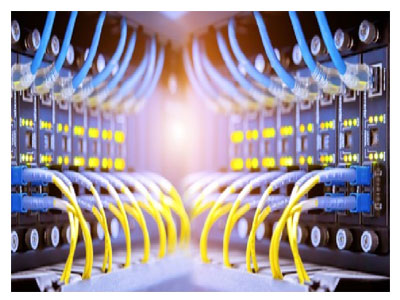Key Takeaway
To install and configure Industrial Ethernet, start by planning the network layout. Identify the devices to connect, such as PLCs, sensors, and actuators, and ensure you have the right hardware like industrial-grade switches and Cat6 cables. Install the cables properly, avoiding sharp bends and interference from electrical equipment. Use managed switches for better control and monitoring.
For configuration, assign unique IP addresses to all devices and set up VLANs to segment the network for better performance and security. Enable features like Quality of Service (QoS) to prioritize critical data traffic. Test the network thoroughly to ensure all connections work and data flows correctly. Regularly update firmware and document the configuration for future troubleshooting. These steps will ensure a reliable and efficient Industrial Ethernet setup.
Planning the Industrial Ethernet Network Layout
A solid network layout is the foundation of a reliable Industrial Ethernet system. Planning this layout involves understanding the requirements and mapping out the physical and logical connections.
1. Identify Requirements: Determine the number of devices, their locations, and the types of communication protocols they use (e.g., PROFINET, Modbus TCP).
2. Define Topology: Choose an appropriate network topology, such as star, ring, or line, based on your operational needs. For instance, a ring topology provides redundancy, ensuring minimal downtime during a failure.
3. Account for Growth: Design the layout with scalability in mind, allowing for future expansions without significant rework.
4. Cable Routing: Plan cable paths to avoid high-interference areas, like near high-voltage equipment, to maintain signal integrity.
For example, a factory producing consumer electronics might plan a star topology with central switches connecting robotic arms, conveyors, and sensors, ensuring efficient communication. Proper planning prevents bottlenecks and reduces the risk of communication failures.

Choosing the Right Cables and Devices for Installation
Selecting the correct components is crucial for ensuring reliability and performance in Industrial Ethernet networks.
1. Cables: Use shielded Ethernet cables (Cat5e, Cat6, or Cat7) to reduce electromagnetic interference (EMI) in harsh environments. Opt for industrial-grade cables that withstand heat, moisture, and physical wear.
2. Switches: Choose managed switches for better control over traffic and diagnostics. Redundant power supply options can enhance reliability.
3. Connectors: Use ruggedized connectors, such as M12 or RJ45, designed to withstand vibration and environmental stress.
4. Devices: Ensure all connected devices, such as PLCs and sensors, are Ethernet-compatible and support the required communication protocols.
For instance, in an outdoor refinery, industrial-grade Cat6 cables with high EMI resistance and switches with weatherproof enclosures ensure durability and uninterrupted communication. Investing in the right components reduces long-term maintenance and operational issues.
Step-by-Step Guide to Configuring Industrial Ethernet Switches
Step-by-Step Guide to Configuring Industrial Ethernet Switches
Testing and Validating the Network Post-Installation
Testing ensures the network operates as intended and identifies issues before they affect production.
1. Connectivity Tests: Verify that all devices are communicating correctly using tools like network ping tests or dedicated monitoring software.
2. Bandwidth Utilization: Measure bandwidth usage to ensure the network can handle data loads without congestion.
3. Redundancy Tests: Test failover mechanisms by simulating failures, such as disconnecting a cable in a ring topology.
4. Signal Integrity: Use tools like time-domain reflectometers (TDR) to check for cable faults or signal degradation.
5. Network Performance: Monitor latency and packet loss to confirm the network meets the required performance standards.
For instance, a logistics company setting up an automated warehouse might test the network by simulating high traffic during peak hours to ensure smooth operation. Comprehensive testing minimizes disruptions and ensures a reliable network.
Troubleshooting Common Installation Issues
Even with thorough planning, issues can arise during installation. Here’s how to address common problems:
1. IP Conflicts: Duplicate IP addresses can disrupt communication. Use a network scanner to identify and resolve conflicts.
2. Cabling Issues: Poor-quality cables or improper terminations can lead to data loss. 3. Replace faulty cables and ensure proper crimping and connections.
3. Switch Misconfiguration: Incorrect VLAN or QoS settings can cause traffic delays. Review switch configurations and make necessary corrections.
4. Environmental Interference: EMI from nearby machinery can disrupt signals. Use shielded cables and proper grounding to mitigate interference.
For example, a production line experiencing frequent disconnections might trace the issue to improperly routed cables near a high-voltage motor. Fixing the cable path resolves the problem and restores stability.
Conclusion
Installing and configuring Industrial Ethernet networks requires careful planning, the right components, proper setup, and thorough testing. By following best practices such as network segmentation, VLAN configuration, and redundancy, you ensure a reliable and efficient system.
For engineers, mastering these steps not only ensures a successful installation but also sets the foundation for future network expansions. A well-installed Industrial Ethernet network is key to achieving seamless communication and operational excellence in any industrial environment.
